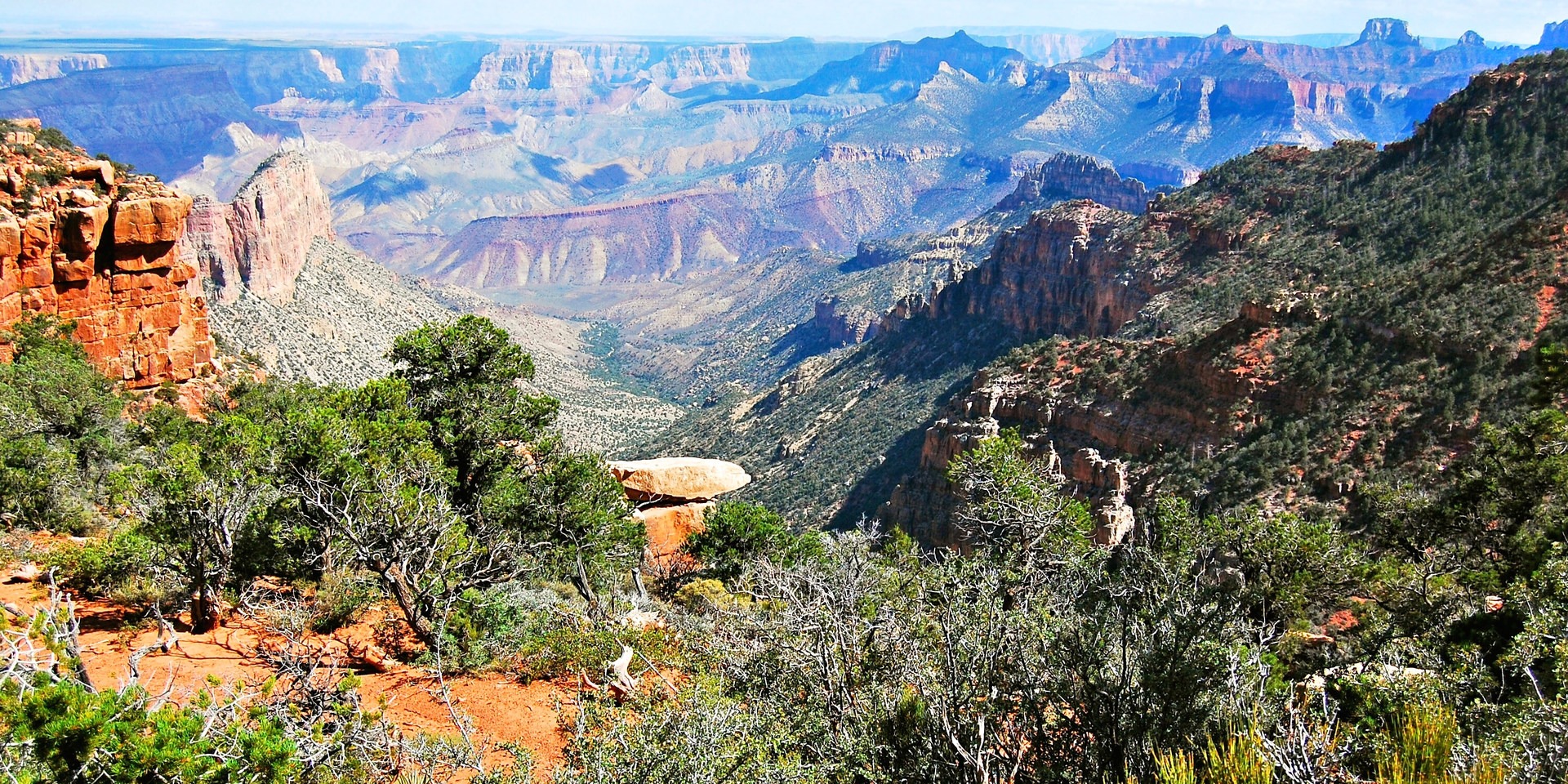This trail, located within the Saddle Mountain Wilderness of Kaibab National Forest, is a less well-known route to access the majestic Grand Canyon. The trail leads from the vast expanse of House Rock Valley up Saddle Mountain Pass and to the edge of the North Rim. The ultimate reward is a vista of the Grand Canyon from a vantage point never reached by most park-goers.
The trail begins in arid scrubland, but it steadily ascends to pinyon-juniper forest, dips into a ravine with deciduous vegetation and abundant wildflowers, then climbs through mixed conifer forest that is dominated by ponderosa pine. The geology is equally diverse, as the Grand Canyon's typical strata are warped and weathered by the uplift of the Kaibab Plateau. As you hike the trail, watch for the stark changes in flora and observe the dramatic range of colorful rock formations along the way. Wildlife sightings may include hare, turkey, grouse, the Kaibab's famous mule deer, or maybe even the elusive bison herd that inhabits the plateau. And don't forget to watch out for rattlesnakes.
Historically, this route was used by outlaws to steal horses from Utah and lead them across the Grand Canyon en route to sale in Mexico. The history of this area is far deeper, however. The mountains and canyons here were inhabited for ages by Native Americans, and Saddle Mountain pass was used for seasonal migration. Finding remnants of stone or bone tools, and even shards of pottery along the trail, is not uncommon. Please respect these artifacts by leaving them intact where you find them.
This trail is one access point to Nankoweap Trail, which is a popular multi-day trip to the bottom of the Grand Canyon. Keep in mind that once you reach the overlook and intersect the Nankoweap Trail you are inside Grand Canyon National Park; rules for usage change once you enter the park, and camping permits are required. Also note that this trail access is remote, so be sure to carefully manage your vehicle's fuel level.

























Comments
Sign In and share them.